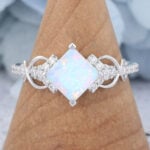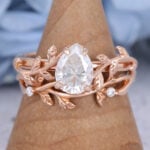The Ultimate Guide to Lab Grown Sapphire
When buying a sapphire, choosing a lab grown sapphire provides a combination of beauty, quality, and affordability. These gemstones share the same chemical composition, brilliance, and durability as natural sapphires, while offering vibrant colors and excellent clarity. Lab grown sapphires are also ethically produced, making them a popular choice for engagement rings, necklaces, and other fine jewelry. This article will explore the physical properties, symbolism, pricing, and buying tips for lab grown sapphires to help you make an informed choice.
What Is a Lab Grown Sapphire?
Definition of natural sapphire refers to corundum formed naturally in the earth’s geological environment, whereas lab grown sapphire is produced artificially in a laboratory that replicates these natural conditions. It is also known as lab created sapphire, man-made sapphire, synthetic sapphire, or artificial sapphire. Lab grown sapphires have the same chemical composition of a sapphire as natural stones, ensuring identical hardness, brilliance, and durability. The creation of lab grown sapphires not only dramatically shortens the formation process but also allows precise control over color and clarity, providing jewelry enthusiasts with a beautiful and affordable range of sapphire options.
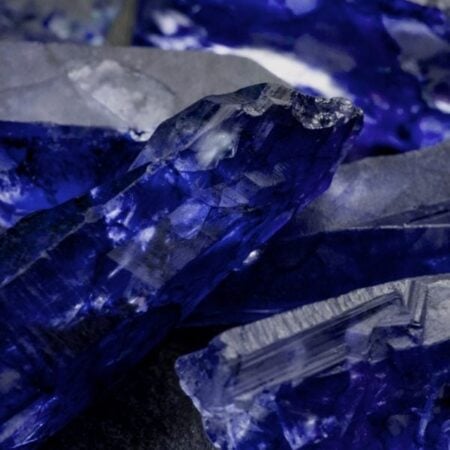
Physical Properties of Lab Grown Sapphire
Sapphire Color
The color of sapphire varies widely, giving jewelry enthusiasts numerous options to match personal style and meaning:
Blue Sapphire: The most classic sapphire color, blue is widely recognized and frequently chosen for traditional engagement rings.
Pink Sapphire: With its soft and romantic hue, pink sapphire symbolizes love and tenderness, making it an ideal choice for sentimental gifts or engagement rings.
Yellow Sapphire: Yellow sapphires represent wealth, happiness, and good fortune. They are often paired with diamonds or white gold in jewelry designs to create a vibrant and eye-catching effect.
Orange Sapphire: Vibrant and warm, orange sapphires convey energy and enthusiasm. They symbolize passion, courage, and creativity, making them a popular choice for personalized jewelry designs.
Green Sapphire: Less common than other shades, green sapphires range from light to deep green depending on iron content. They symbolize balance, healing, and tranquility, perfect for those seeking a unique and understated luxurious style.
Colorless Sapphire: Transparent and pristine, colorless sapphires offer brilliant clarity and sparkle. They are often used alone or paired with other colored gemstones, symbolizing purity and elegance.
Sapphire Hardness and Durability
Lab grown sapphires have exceptional hardness, reaching 9 on the Mohs scale, second only to diamonds (10). They also offer excellent resistance to impact and abrasion, making them less prone to cracking or damage. Thanks to precise control over crystal structure and internal inclusions during the lab-grown process, lab grown sapphires are typically purer and more durable than natural sapphires, making them ideal for rings, bracelets, necklaces, and other jewelry designed for daily wear.
Sapphire Refractive Index
The refractive index of a sapphire gemstone determines how light bends and reflects within it, directly affecting its brilliance and sparkle. Lab grown sapphire has a refractive index ranging from 1.762 to 1.770, which is identical to that of natural sapphire. This high refractive index allows lab grown sapphires to display remarkable brightness and fire, making them visually stunning in any jewelry setting.
Sapphire Price
The cost of sapphire varies depending on factors such as color, clarity, cut, and carat weight. While natural sapphires can be expensive due to their rarity and mining costs, lab grown sapphires provide a more affordable alternative without compromising quality. For instance, a high-quality 1 carat lab grown sapphire typically ranges from $20 to $200 per carat, depending on color saturation, clarity, and cut. With their consistent color and clarity, lab grown sapphire offers excellent value, making them an attractive choice for engagement rings and fine jewelry at a more accessible price point.
Sapphire Inclusions
Inclusions are internal features within a gemstone that affect clarity. In lab grown sapphires, inclusions are minimal and more uniform than in natural stones. Inclusions in synthetic sapphire are usually tiny or patterned and do not affect durability or brilliance, making lab grown sapphires highly attractive for fine jewelry.
Symbolism and Meaning of Sapphire
The meaning of a sapphire has been associated with wisdom, loyalty, and nobility since ancient times. In ancient Europe, sapphires were used by royal families to adorn crowns and other items, symbolizing power and protection. Furthermore, sapphires hold religious significance, symbolizing truth and spiritual insight.
Modernly, sapphires are often used in jewelry such as wedding rings, symbolizing loyalty, honesty, and everlasting love. It is believed that wearing a sapphire can enhance trust and emotional stability between partners, protecting the longevity of love.
Different colors of sapphires have unique symbolic meanings:
Blue sapphire: Symbolizes wisdom, loyalty, and spiritual insight, and is the most classic sapphire color.
Pink sapphire: Symbolizes love, romance, and tenderness, making it suitable as an emotional gift or engagement ring.
Yellow sapphire: Symbolizes wealth, happiness, and good fortune, promoting confidence and a positive outlook.
Orange sapphire: Symbolizes passion, courage, and creativity, and is suitable for those who pursue individuality and unique style. Green Sapphire: Symbolizes balance, healing, and tranquility, helping to relieve emotions and stress.
Colorless Sapphire: Symbolizes purity and elegance. Often paired with other gemstones or set on its own, it’s perfect for those who pursue a simple and elegant style.
Benefits of Choosing Lab Grown Sapphire
Choosing a lab grown sapphire offers the perfect combination of beauty, durability, and ethical responsibility. Lab blue sapphire stones are crafted to deliver brilliance and colorless clarity rivaling natural sapphires, making them an excellent choice for engagement rings and fine jewelry. With sustainable creation methods, lab grown sapphires avoid the environmental and ethical concerns of traditional mining, ensuring your center stone is both stunning and responsible. Each stone is carefully inspected for clarity, color, and fire, so you can enjoy timeless elegance and sparkle in every piece you purchase.
Lab Grown Sapphire vs Natural Sapphire
Authenticity
A lab created blue sapphire is a true sapphire, identical in chemical composition, hardness, and optical properties to a real sapphire. It is a genuine gemstone suitable for fine jewelry, offering the same brilliance and durability as a mined sapphire.
Clarity and Color Consistency
Lab grown sapphires have fewer inclusions and more uniform, vibrant colors than many natural stones, thanks to controlled growth conditions, ensuring consistent beauty in every piece of jewelry.
Price and Value
The sapphire worth per carat of lab grown sapphires is considerably lower than that of natural sapphires. For example, a 1-carat lab-grown stone often costs a fraction of a mined sapphire of similar size and quality, making it an affordable choice for engagement rings and fine jewelry.
Sustainability and Ethics
Lab grown sapphire is environmentally friendly, avoiding mining-related ecological impact and reducing resource consumption.
Durability
With a Mohs hardness of 9, lab grown sapphires are highly resistant to scratches and suitable for daily wear, maintaining long-lasting brilliance and value.
Investment and Value Considerations
A lab grown sapphire offers genuine beauty and durability while being more affordable than a natural sapphire. The sapphire worth per carat is significantly lower at purchase, providing excellent value for engagement rings, necklaces, and other fine jewelry. Although their resale value may be less than that of mined sapphires, lab grown sapphires deliver consistent quality, vibrant color, and long-lasting elegance, making them a practical and attractive choice for buyers.
Lab Grown Sapphire Jewelry
Lab grown sapphires are increasingly popular in jewelry due to their vibrant color, clarity, and affordability. They are perfect for engagement rings, earrings, necklaces, and bracelets, offering the same elegance as natural sapphires. Jewelers can craft intricate designs without worrying about inclusions or color inconsistencies, making lab grown sapphires a versatile and sustainable choice. Their durability and brilliance ensure that jewelry pieces maintain long-lasting beauty, making them suitable for both everyday wear and special occasions.
Buying Tips for Lab Grown Sapphire Jewelry
When purchasing lab grown sapphire jewelry, it’s important to consider color, clarity, cut, and carat weight to ensure you get a high-quality stone. Verify that the sapphire comes with certification to confirm its authenticity and quality. Choosing reputable jewelers ensures proper craftsmanship and lasting durability. Additionally, think about the jewelry setting and metal type, as these can enhance the stone’s brilliance and overall appearance. By paying attention to these factors, buyers can enjoy beautiful, durable, and ethically sourced lab grown sapphires that are perfect for engagement rings, necklaces, and other fine jewelry.
Amanda Lab Grown Sapphire Engagement Rings
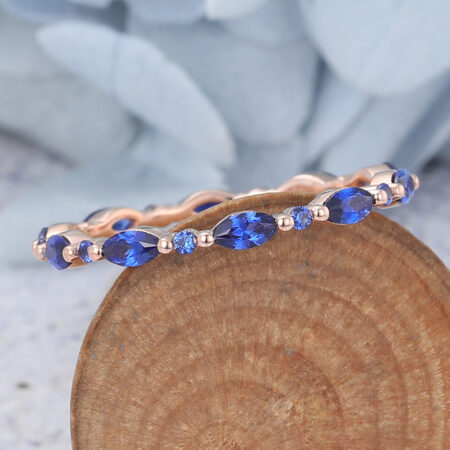
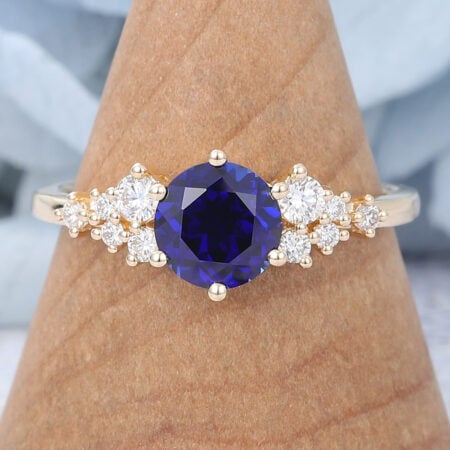
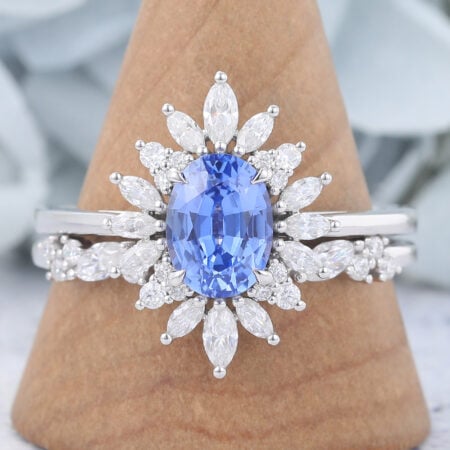
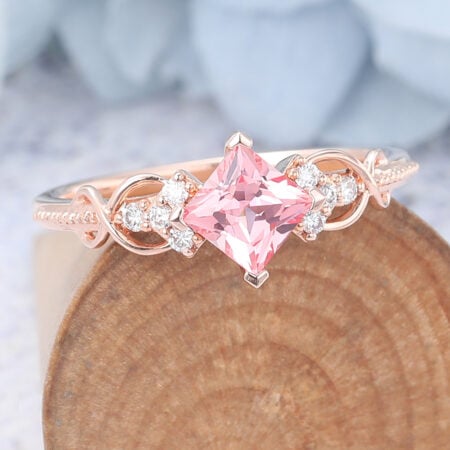
Conclusion
Lab grown sapphire offers a stunning and affordable alternative to natural sapphires. Choosing lab grown sapphires allows jewelry lovers to enjoy the beauty of sapphire while making a practical and sustainable investment in timeless pieces.
FAQs About Lab Grown Sapphire
Can sapphires be lab grown? How are sapphires made?
Yes, sapphires can be lab grown in controlled environments, and natural sapphires form in the Earth over millions of years.
Are sapphires hard?
Yes, sapphires are very hard, ranking 9 on the Mohs scale, second only to diamonds.
Is a lab created sapphire real?
Yes, a lab created sapphire is a genuine sapphire with the same chemical and physical properties as a natural sapphire.
Are lab grown sapphires worth anything? Are sapphires valuable?
Yes, lab grown sapphires have value, though generally lower than natural sapphires, which are highly valued for their rarity and quality.
Are sapphires cheaper or more expensive than diamonds?
Sapphires are generally less expensive than diamonds of similar size and quality, though prices vary by color, clarity, and carat.
What does sapphire symbolize?
Sapphires symbolize wisdom, loyalty, and nobility, and are often associated with love, protection, and spiritual insight.
Real sapphires vs fake sapphires, what's the difference?
Real sapphires, natural or lab grown, are genuine corundum with hardness and brilliance, while fake sapphires are synthetic imitations that lack true chemical or physical properties.
 Christmas: 25% off All ltems · Code AFJ25 ·Ends Dec 30 30% off All Items ·On Orders Over $600 – Code AMANDA30
Christmas: 25% off All ltems · Code AFJ25 ·Ends Dec 30 30% off All Items ·On Orders Over $600 – Code AMANDA30

